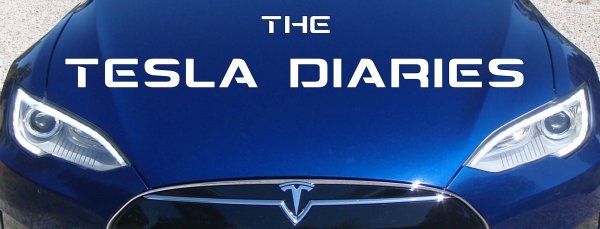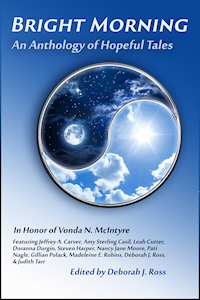
(This post is part of a blog series. In case you haven’t read it, here’s the first post.)
We’re technophiles. Of course we said “yes” to the free trial of Autopilot. We figured we’d check it out, have a little fun playing with it, and then go back to driving for ourselves.
There’s a lot of misunderstanding about Autopilot. People misinterpret the name to mean “autonomous.” That’s definitely on Tesla’s agenda for the future, but as of 2017 we’re not there yet. Nikola’s hardware will never be capable of full autonomy (although the hardware on Teslas being made today will be, once the software has been fully developed).
Autopilot is best described as a suite of driver-assistance tools. The human driver is still, always, responsible for what the car is doing. Autopilot simply helps out with some of the easier driving tasks, which frees up the human driver for what s/he does best: watching the other drivers on the road.
We understood almost none of this when we accepted the free trial.
The first time we got out on the freeway to try Autopilot, we were nervous. We had been trained to use our hands on the wheel to control the car, and decades of driving experience had reinforced that. To let the car control the steering was a frightening step.
We made sure we had plenty of space around us before engaging the autosteering function. (When autosteering is engaged, cruise control is also automatically engaged.) We set our speed to the speed limit (slower than most of the traffic around us), then held our breath and turned on autosteering.
The Model S (and Model X) dashboard provides an animated, real-time display of the driving environment in front of the driver. This includes lane stripes, which appear differently depending on the computer’s confidence in the accuracy of its perception of reality. If the car is confident that the cameras are seeing the lane stripes correctly, it paints them white. If it’s less confident, it paints them gray. If it’s totally confused, it doesn’t show them at all (and if autosteering is engaged, the car turns it off, essentially saying, “You drive”).
When autosteering is engaged, the lane stripes are bright blue. The car’s task is to stay centered between the stripes. Generally, it does a good job of this. Too good, at times—such as when passing a giant semi that’s riding the lane stripe.
The car’s radar senses the semi, and the car draws a conclusion along the line of: “There’s something big to my right, but I’ve got seven inches of clearance, so I’m OK.” Meanwhile, the human driver is freaking out.
Tesla actually modified the software to change the car’s behavior in this situation, making it sidle away from the big thing a bit, while still staying between the lane stripes. It’s less freaky now than when we first got the car.
This is the sort of situation in which human instinct overrides intellect. You’re letting the car steer, with your hands resting lightly on the wheel, and suddenly your hind-brain takes over and makes you take control. You steer away from the semi.
And autosteering shuts off. It’s that simple to take control of the car back.
Once we understood that, we felt much more comfortable letting the car steer. And after a while letting the car steer, we realized something wonderful.
Driving had become far less stressful.
It’s surprising how much focus is required just to keep your car between those lane stripes. This simple task uses a lot of the driver’s mental energy. By handing this task over to the car’s computer, the driver regains focus that can be directed to other tasks. This reduces stress and fatigue, and increases safety. Even a totally focused human being is less accurate than a computer at the simple task of staying between two white lines. For one thing, the computer is not subject to distractions.
Say you’re driving, and you feel a sneeze coming on. You brace yourself for the moment when you’ll lose control for a second. With autosteering engaged, you don’t have to brace yourself. You might look around to make sure no surprises are heading toward you, but you can sneeze without worrying that the car will veer out of your lane. You can even blow your nose, and then go back to monitoring the drive.
This was a revelation for us, but it wasn’t the most wonderful one. The most wonderful part of Autopilot is actually the adaptive cruise control.
Cruise control is common, of course, and most drivers understand it. Autopilot’s cruise control offers a crucial difference: It maintains a set distance from the car ahead of yours (referred to as the “lead car”).
This means that when you’re driving down the freeway at 75 miles an hour and you come up behind a car doing 65, you will not hit that car. Your Tesla will slow down to match the speed of the lead car, and maintain a set distance from it.
Again, huge stress-reducer, and major safety increase.
In rush-hour traffic, or a traffic jam caused by an accident, adaptive cruise control makes what is normally a high-stress situation entirely comfortable. It even works when your car comes to a complete stop (as long as it was engaged while you were moving). In stop-and-go traffic, the car does the stopping and going. This leaves the driver free to watch what all the other drivers are doing.
When we understood all this, which took maybe a week, we knew we were going to buy Autopilot.
My spouse commutes about 70 miles a day. You bet we wanted Autopilot to help keep him safe and reduce the stress of that daily drive.
If you’re considering buying a Tesla, do yourself a favor. Plan on buying Autopilot. Yes, it’s expensive. It’s totally worth it, and it’s more expensive to add it later, so just get it from the first.
You’ll be glad you did.
(On to part 7…)
Tesla has again updated their referral offer! If you use a referral code from an existing Tesla owner, like this one: http://ts.la/pat9663 (good for five referrals, after which it expires) to order a new Model S or Model X, you will be eligible for free Supercharging as long as you own your Tesla. The same code is also good for a 5-year extended limited warranty on a new solar energy system installation. This offer ends April 30, 2018.







